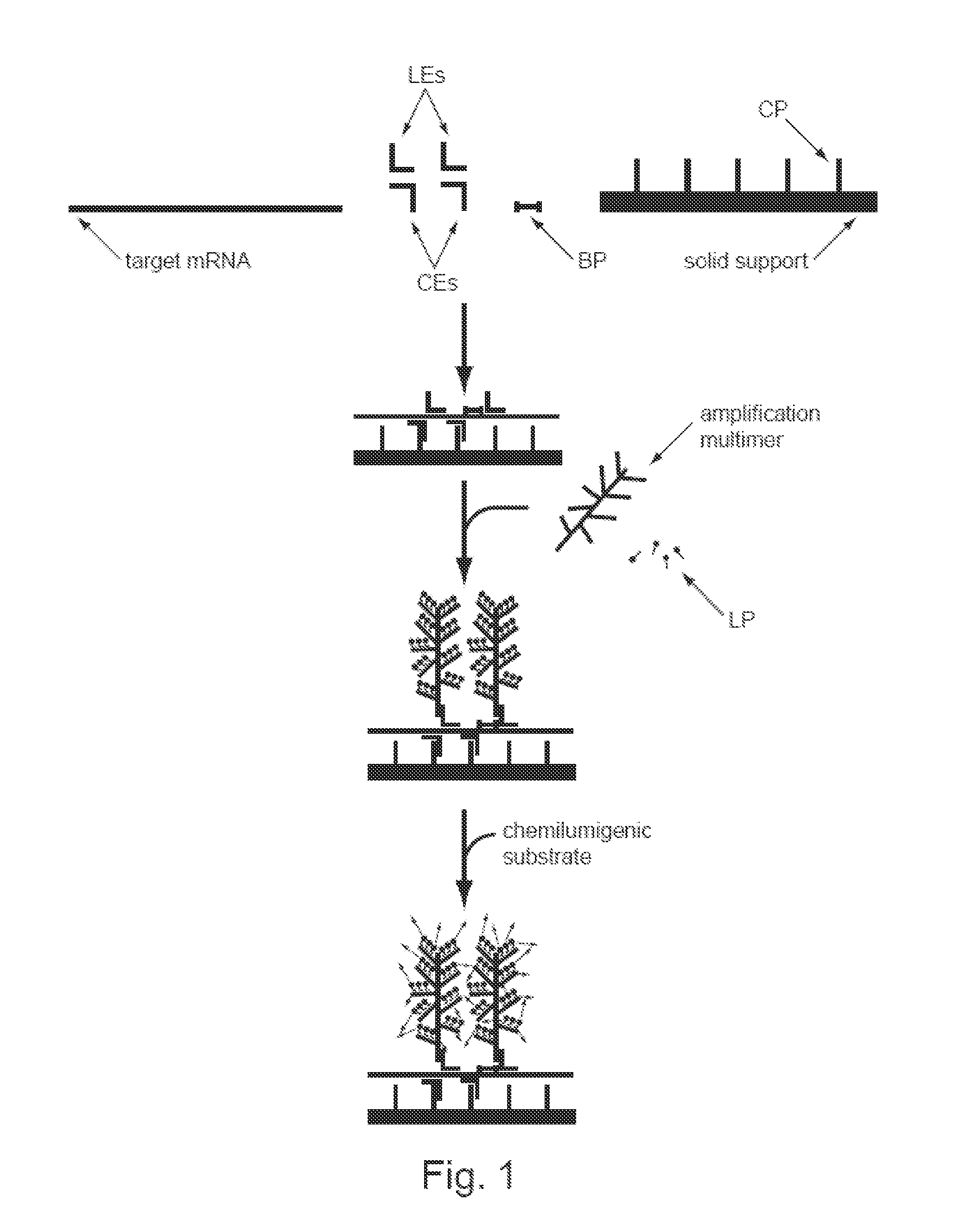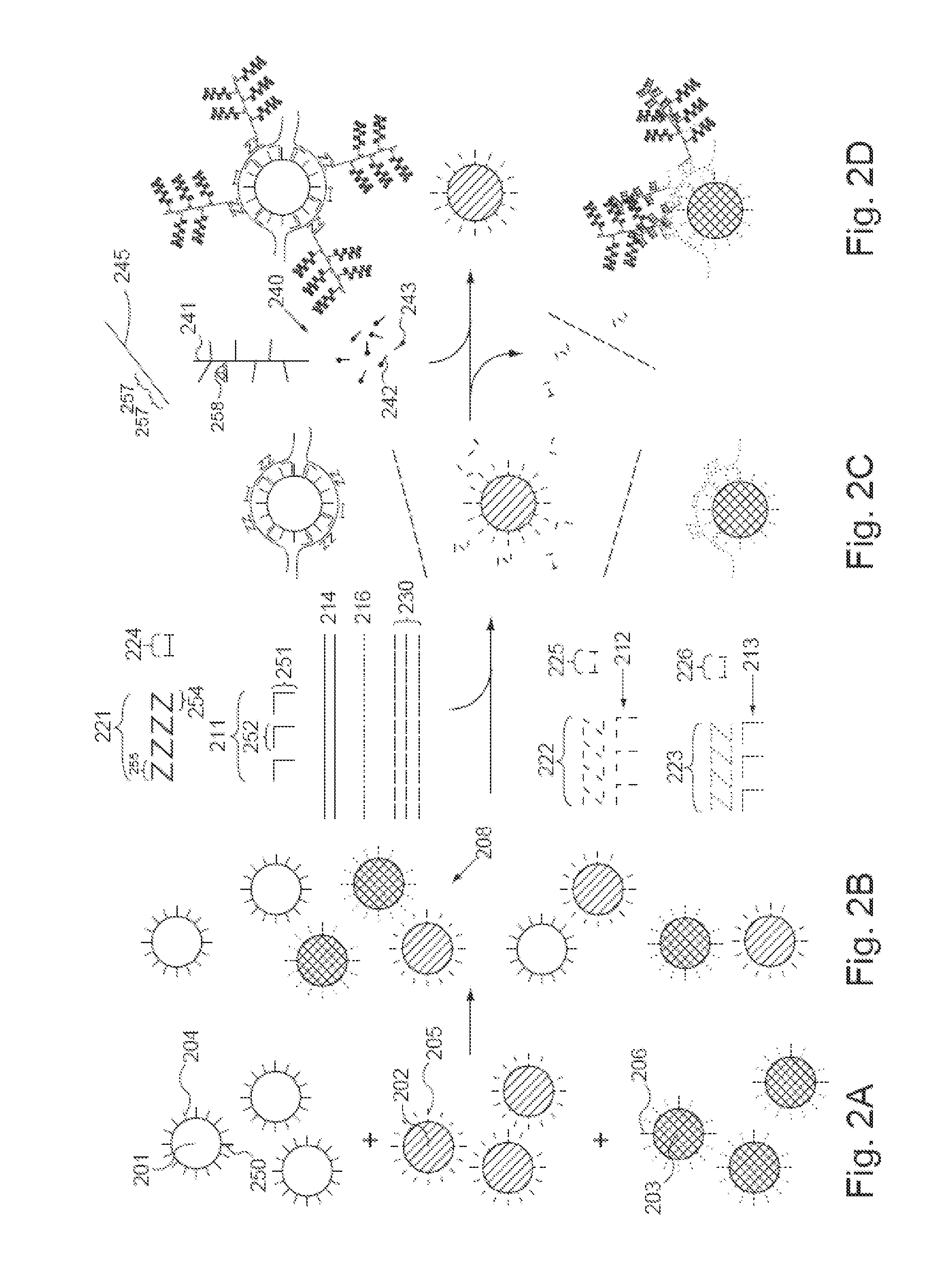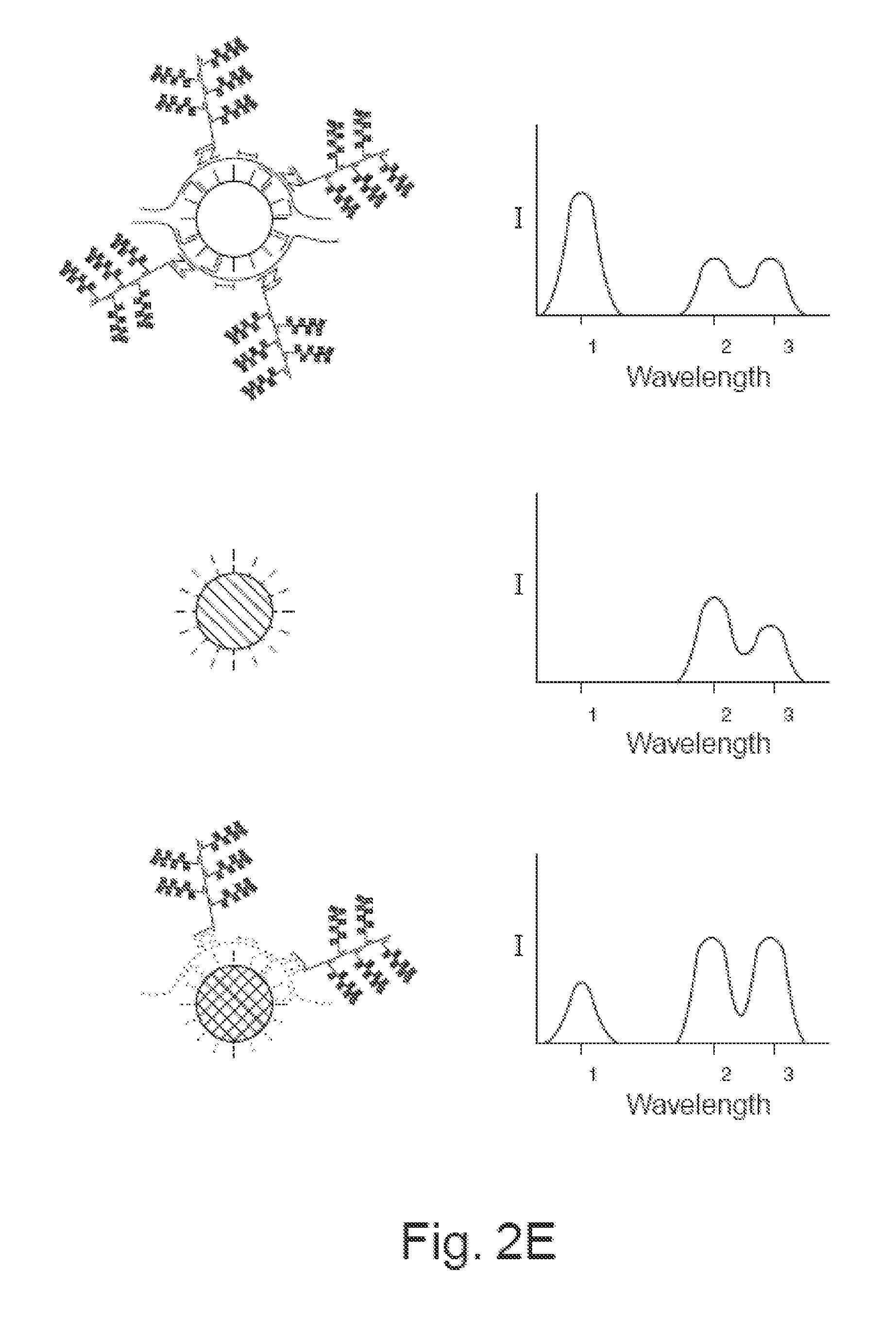Signal Multiplexing and Signal Amplification
a signal amplification and signal multiplexing technology, applied in the field of nucleic acid and protein detection in assays, can solve the problems of inability to achieve signal amplification, affecting the detection accuracy of assays, and requiring time-consuming and difficult manipulation steps
- Summary
- Abstract
- Description
- Claims
- Application Information
AI Technical Summary
Problems solved by technology
Method used
Image
Examples
second embodiment
[0181]Disclosed are two embodiments which achieve this goal. One embodiment is generally directed to varying the size, shape and color of various microspheres, beads or microparticles used to capture targets. The second embodiment is generally directed to varying the design of the label probe system such that different combinations of labels may be bound to the label spokes or amplifiers, and the like.
first embodiment
[0182]In the first embodiment, the target nucleic acids are bound to a substrate. The substrate may be, for instance, a bead, microparticle, or microsphere. The size and shape of the substrate may be varied any number of ways. For instance, current methodologies employ differently colored beads onto which are bound target nucleic acids by use of a capture probe and capture extender. However, this limited set of beads may be increased by simply varying the size of the bead and / or the shape of the bead. Beads may be oblong, oval, square, triangular, rhomboid, octagonal, etc.
[0183]In the second embodiment, a different sequence is used to hybridized to each different label probe by each amplifier. Thus, each label probe system has a unique set of amplifiers, each comprising a nucleic acid sequence that specifically hybridizes to a unique set of label probes. This system can be further manipulated such that each label probe system can hybridize as many as two, three, or four or even more...
PUM
| Property | Measurement | Unit |
|---|---|---|
| diameter | aaaaa | aaaaa |
| diameter | aaaaa | aaaaa |
| diameter | aaaaa | aaaaa |
Abstract
Description
Claims
Application Information
 Login to View More
Login to View More - R&D
- Intellectual Property
- Life Sciences
- Materials
- Tech Scout
- Unparalleled Data Quality
- Higher Quality Content
- 60% Fewer Hallucinations
Browse by: Latest US Patents, China's latest patents, Technical Efficacy Thesaurus, Application Domain, Technology Topic, Popular Technical Reports.
© 2025 PatSnap. All rights reserved.Legal|Privacy policy|Modern Slavery Act Transparency Statement|Sitemap|About US| Contact US: help@patsnap.com



